| FAERY LORE |
| Faery, in folklore, are one of a variety of supernatural beings endowed with the powers of magic and enchantment. Belief in the fae has exicted man from earliest times, and literatures all over the world have tales of faeries and their relationship with humans. Some Christians have said that faeries were the ancestors of the ancient pagan gods, who, having been replaced by newer dieties, were therefore hostile. Others thought that faeries were nature dieties, similar to the Greek nynphs. Still others identified faeries with the souls of the dead, particularly the unbaptized, or with fallen angels. Amons their many guises, faeries have been described as tiny, wizen-faced old men, like the irish leprechaun, as beautiful enchantresses who wooed men to their deaths, like Morgan Le Fay and the Lorelei; and as hidious, man eating giants like the ogre. Fairies were frequently supposed to reside in a kingdom of their own, which might be underground e.g. gnomes; in the sea e.g.mermaids; in an enchanted part of the forest; or in some far off land. Sometimes they were ruled by a King of Queen, as were trolls in Ibsen's Peer Gynt and the faeries in Shakespeare's A Midsummer Nights Dream. Although fairies were usually represented as mischievous, capricious, and even demonic, they could also be loving and bountiful, as the fairy godmother in Cinderella. Sometimes fairies entered into love affairs with mortals, but usually such liaisons involved some restrictions or compact and frequently ended in calamity, as did those of Melusine and Undine. |
| DRAGON LORE |
| Dragons and serpents of Celtic Religion symbolized Earth energies, potent forces of the land, which polarized into Positive and Negative roles. The mythical beast usually is represented as a huge,winged, fire-breathing reptile. For centuries the dragon has been prominent in the folklore of many peoples; thus, tis physical characteristics vary greatly and include combinations of numerous animals. The dragon has often been associated with evil. In many legends a dragon had the ablilty to wreak havoc upon the land and therefore had to be either placated with a human sacrifice, or killed; it was also often the guardian of a treasure or a maiden. The highest achievement of a hero in medieval legend was the slaying of the dragon, as in the story of St. George. King Arthur, son of Uther Pendragon ( dragon's head), also killed a dragon. The giant red dragon of the Apocalypse (rev.12) gave rise to the use of the beast as smybolic of Satan in Christian art and literature. In ancient China, the dragon was associated with fertility and prosperity. Many of the beliefs connected with the dragon are echoed in snake worship. In esoteric terms, the Red Dragon,Ddraig Goch, represents the Sovereignty of England and is the totem beast of the greatest line of Kings, The Pen-Dragons. The Red Dragon ( dragon is ddraig in Welsh ) is derived from the Great Red Serpent that once represented the Old Welsh God, Dewi, who later metamorphosed into Wales mythical patron saint, David. There is a legend that Merlin, Druid Wizard and later resident Wiseman of King Arthur's court, was called to help King Vortigern. He was attempting to build a temple (Stonghenge) on Salisbury Plain, but the structure kept falling down. Merlin saw that the problem was that a Red and White Dragon were fighting in a mystical pool beneath the temple's foundations. Stonehenge, a Megalithic Stone Circle dating from the 3rd Millennium, B.C.E., is built on a powerful convergence of earth energy lines ( Ley Lines ), represented by the two Dragons. Merlin prophesied that Vortigern, the Red Dragon, would be slain by Uther Pendragon, The White Dragon, and so it happened. |
| UNICORN LORE |
| Unicorns, fabulous equine beasts with a long horn jutting from the niddle of it's forehead. Once thought to be native to India, the unicorn was reportedly seen throughout the world. It was often considered as a composite creature, having the features of various animals. The unicorn is depicted as a beautiful animal, usually pure white in color. It has been used to represent virginity, but also has religious significance in connection with the Virgin Mary and Christ. The hunting of the unicorn was subject in tapestries of the late Middle Ages and the Renaissance. In Medieval times people believed Unicorns really existed. They were in the Bible, which people took as ultimate truth. Also they were mentioned in books called "bestiaires", the field guides of the times. The Bestiairies called Unicorns ferocious beasts, so strong they could only be killed but never captured alive. How did they get from ferocious beast to creatures of beauty, no one knows. Legends sprang up and the Unicorn's abilities grew. The best known legend is the Maiden and the Unicorn. Where hunters could not capture the Unicorn by force, a pure young woman could, for her innocence would so facinate the Unicorn that he would come and lay his head in her lap. The hunters could then come and take down the beast. From here sprang hundreds of stories of girls who loved the Unicorn and saved him from the hunters. The Unicorn's horn of course has many powers. It can purify water and cure poison and disease. True horns were said to to have such purity that poisonous creatures would die if brought in contact with them. Then legends began and grew. But men turned from mystery to cynicism, and the Unicorn's fled to another world, or the wildest places in our own world or into the sea. Only their images live on for the Unicorn maidens to see. So any who wished to please the young maidens wrote of the magical beast in verse and song, weaved them into stories and paintings and thus kept the lore alive. |
| ANGEL LORE |
| The Angel is a heavenly being, superior to humans, who serves as an attendant, a messenger of God or a guardian for someone on Earth. Angels typically have wings, are delicately beautiful and either glow or are surrounded by halos, they are immortal spirits, limited in knowledge and power, accepted in the traditional belief of Judiaism, Christianity, Islam and other religions. Angels appear frequently in the Bible, often in critical roles e.g. visiting Abraham and Lot ( Gen.18;19), wrestling with Jacob (Gen,32.24-32) and guiding Tobit (Tobit5). The Bible also speaks of guardian angels, pretecting individuals or nations (Dan, 10.10-21; Mat.18.10). In the Gospels an angel announced the incarnation to the Virgin Mary and an angel at the empty tomb revealed the Resurrection. While Judaism has no fixed ordering or classes of angels, Christianity has a specific hierarchy. Codified in its classic form in the 5th century by St. Dionysius the Aeropagite in (The Celestial Hierarchy). In descending order the ranks of angels are seraphim, cherubim, thrones, dominations, virtues, powers; principalities, arch-angels, and angels. Roman Catholics and the Orthodox venerate angels, and the cult of guardian angels is especially extensive in the West. Protestants have generally abandoned the cult of angels. In heavenly host; the chief of them, Satan ( or Lucifer), was cast out of heaven for leading a revolt. They are often viewed at the initiators or evil temptations. According to tradition, each person has two scribe angels, the one on the right side recording good deeds, the one on the left taking note of transgressions. A lower order of angels is known at the jinn. Angelology is the study of angels. In 1978, over half the people in the United States surveyed said they believed in angels. Angels are drawn on greeting cards, painted on ceilings and mentioned in one of every top ten songs. There are nine orders, or groups of angels that surround God. These nine are further divided into groups of three, or triads. The First Triad Seraphim, Cherubimm, Thrones Angels closest to God who appear to humans with 6 wings and 4 heads. They are angels of love. God's charioteers who have 4 wings and 4 heads. They are angels of knowledge. Huge they are known as "may-eyed ones" They makup God's chariot. The Second Triad Dominions,Virtues, Powers Angels who oversee other angels. Known as "The Shining Ones," they are miracle workers. The "border guards" between the first and second level of heaven. They are also the guadians of human souls. The Third Triad Principalities, Archangels, Angels Angels in charge of Earth's nations and cities. The go-betweens or messengers from God to humans. They also battle the Devil. The "watchers" who never sleep. Among these are the guardian angels who are assigned to every human at birth. |
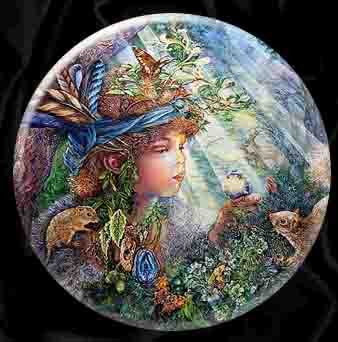 |
| FOLKLORE OF IRELAND |
| Folklore and legends are usually myths based on some credible facts and beliefs. When the Celts arrived in Ireland about 600 B.C. they brought with them the corner stone of Irish Folklore. They arrived in a land of magnificant forests, streams with abundance of salmon and many fine archaeological remains from earlier invaders, such as the passage grave of Newgrange and the man dolmens and megalithic tombs ~ a land ideally suited to Celtic culture and beliefs. The Celts believed these sites were inhabitated by the spirits of the Tuatha De Danann, the people of the Centic Goddess Danu. Magic forces filled the lives and surroundings of the Celts. Animals and sometimes human sacrifices were offered to please the Gods or to seek their assistance in battle or plea for a successful harvest. Dagda was the chief god and others had specific roles, such as Morrigan, a powerful warrior Goddess and Lug the fertility God. The Gods lived in Tir na nOg, a land of eternal youth far out at sea. Places were also sacred, such as woods, rivers and wells. In fact, their beliefs were very similar to those held by North American Indians or the tribes of the rain forests. |
| DRUID LORE |
| The lineage of the Druid spiritual tradition can be traced across many thousands of years of time. We see the first evidence of spiritual practice in Europe 25,000 years ago, when candidates for initiation would crawl into caves, such as those at Lascaux In France or Altamira in Spain, which are dramatically painted with figures of wild animals. After being initiated in the belly of Mother Earth, they were reborn into the light of day. Twenty thousand years later, in around 3000 B.C., we can see the same practice of seeking rebirth within the Earth; great mounds were built in which initiates would sit in darkness awaiting the time of their rebirth. The best example of this is found at New Grange in Ireland, where a shaft is oriented to the Winter Solstice sunrise, so that the dawn rays can bathe the initiate in sunlight after his or her vigil through the night. Four and a half thousands years later, in the sixteenth century, the key text of Druid spirituality, transcribed from the oral tradition by Christian clerics, talks of the spiritual and magical training of a Druid, in which he is eaten by a Goddess, enters her belly, and is reborn as the greatest poet in the land. So from over twenty thousand years ago to the sixteenth century, we see a common theme ~ which we find again in the training of Druids and poets in Scotland up until the seventeenth century. There, to awaken their creative genius, they were told to lie in darkness for days, and after this period of sensory deprivition, they were released into the brightness of the world. This seeking spiritual rebirth and creative expression through undergoing a simulated death-rebirth experience, runs like a golden thread of spiritual practive through the four major periods of history that relate to Celtic and Druid spirituality; the first is the prehistoric period; in which as the Ice Age retreats from Europe, tribes from many directions, including Spain and the steppes of Russia, move westwords towards Britian and Ireland. A megalith building culture developes, which raises great mounds like New Grange, and great circles of stone like Stonehenge. They possess considerable knowledge of astronomy, having enginnering skills that we find hard to understand even today, and use Pythagorean mathematics to build their monuments, two thousand years before Pythagoras is born. This period of pre- and then early Celticism gives way to the period of documented history, in which we can read about the Celts and Druids from the works of classical writers, such as Julius Caesar. We discover that the Celts had developed a highly sophisticated religious system, with three types, the Ovates, who were the healers and seers, and the Druids who were the philosophers, judges and teachers. During this time there was much cross-fertilisation between Celtic culture and that of Greece and Rome. With the coming of Christianity, we enter the third period; in which the schools of the Bards became Christian schools, and continued to exist until the seventeenth century; and in which the Ovates became the village healers and midwifes; while the Druids remained as the intellectual elite, and mostly converted to Christianity. This period lasted for a thousand years from the triumph of Christianity over all of Europe by the sixth century, to the sixteenth century. During this millennium, Celtic and Druid spirituality was preserved by the Christian Clerics who performed the valuable service of recording many of the stories and myths by which the oral teachings of the Druids were conveyed. People who think that Druidry was destroyed with the coming of Christianity fail to understand the resillience of spiritual teachings when they are encoded in myths and stories; and it is thanks to the clerics recording of these tales that we are able to be inspired by them today. St. Patrick also recorded all of the old Druid laws in Ireland ~ by providing us with invaluable information on the ethics and social structure of pre-Christian Celtic culture. The fouth period begins with the sixteenth century, when scholars in Europe ' Rediscovered " the Druids, and then began to reclaim their Celtic heritage. The church had taught that we were savages until the arrival of Christianity. But with the translation and printing of the classical texts on the Druids, Europeans discovered that their ancestors were far from being savages. As the same time, reports were coming back from America of Native American people who, like their ancestors, had been untouched by Christianity, and yet were worthy of admiration. This provoked a period known as the Druid Revival in which groups and societies were formed to study Druidry and Celticism. Cultural festivals, incorporating Druid ceremonies, and celebrating Celtic languages, grew up in Wales, Cornwall and Brittany. This period of revival has never finished, instead, it has developed into a Renaissance, as more and more people find within Druidry a living spirituality that holds all of Nature sacred, and that offers a path of creativity and freedom rooted deep in ancient tradition. |
| DEVAS AND ELEMENTALS |
| The term "deva" in the ancient Eastern Language Sanskrit means "shining one". Devas or adhibautas represent the higher forms of nature essences, akin to angels, the opalescent beings who watch and direct the natural world. They communicate with people either through channeling or psychic communication, or directly through the healing and restorative properties of herbs, flowers and trees. The current view of devas has evolved from Hinduism and Buddhism. These entities are far more abstract and so less readily described than the shining being of the old Gods of Dana ( The celtic gods and goddesses) whose faery court rivalled the finest in Europe. It was Madame Helena Blavtsky, founder of the Theosophical Society, who brought the concept of devas as angelic beings to the West. She believed that, when humanity had achieved a high enough state of spiritual evolution, devas would enter into communication with mortals and help them develope further. Since devic communication is now apparently occuring, it may be that humans are ready to accept this higher form of wisdom, though it may also be that the dire state of the planet has perhaps accelerated the need for higher forms of nature to intervene. Though devas do primarily relate to the natural world they transmit messages concerning the need for peace and harmony, as well as caring for all nature's creaturs. DEVIC POWER Devas are credited with great powers in the skies, water and earth, exploding star clusters, regulating the tides and creating perfume in flowers. In eastern philosophy it is said that trees can provide a home for devas who do not assume a permanent form. This may be the origin of the oracular or sacred trees that are found in different cultures and ages. For example, the prohpetic oak, sacred to the Greek Father God Zeus, stood in the oracular groves at Dodona. A piece of the tree was placed in the "Argo", the boat of Jason and the Argonauts to give them guidance on their quest for the Golden fleech. Other devas assume the role of sacred guardian at ancient sites and have been described as huge brown shadows as dusk draws in, or as silver columns of light when dawn breaks through. Devas communicate telepathically with humans, and devic communication can occur quite spontaneously in a beautiful garden or woodland. It can also be induced by visualization of a deva and allowing the words to form. In the Icelandic and Scandinavian traditions that spreak to other parts of northern Europe, including Britain, the land wights or landvaetir acted as guardians of villages and settlements, passing along the faery paths ad dusk and enclosing the area in their protection. Certain fields and hills were declared sacred to them and could not be built on or even ploughed. Devas are also associated with one of the four elements of Earth, Air, Fire and Water and rule over the Elemental beings. In Wicca and ceremonial magic, devas are called Lords of the Watchtower and represent the Four Quarters of the Ritual Circle. Sometimes Archangels take on this role; for instance Michael, Archangel of Sun, is linked with Fire and Gabriel, the Archangel of the Moon and Water. ELEMENTALS Rather than being creatures with a permanent form, the elementals are the forces or energies that in nature and magic give shape to living things and bring thoughts and desires into actuality, for example seeds into flower and trees. The power of Fire, kindled symbolically in a candle flame, will burn away a piece of paper containing words or an image of what is no longer needed. Elementals are believed to have the power to change their size and appearance almost at will. They take on a particular form for a paticular task, and there are pictures in sixteenth century alchemical tracts, of stick-like elemental beings, in the case of a Fire elemental resembling a flickering flame. Indeed, it is said they can hold a particularily potent form for a thousand years, before being reabsorbed into the source element. Elementals have been associated for hundreds of years with more formal magical traditions, precisely because they are believed to transform into actual thought forms invoked by symbols. Thus medieval occultists sought mastery over the elemental beings that they fashioned by their incantations. Sometimes, if magicians used the elemental forces for negative purposes, they would create a tulpa or thought form that became an elemantal demon. This entity was hard to banish, even though magicians worked within a square enclosed by two magic circles, in extreme cases the tulpa might destroy it's creator, hench the warnings about magical effects coming back threefold. But equally an elemental might be created, perhaps by a deva, for an entirely positive purpose. Taking the example of the forest, an elemental being would give the energy and structure for a seed to grow into it's own species which would then be inhabited by a tree spirit. The deva would guard the whole forect and coordinate the growth/decay/new life cycle, striving to maintain the healing, life growing force being damaged by deforestation. |
 |
 |
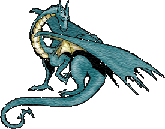 |
 |
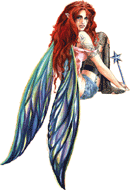 |
 |
 |
 |
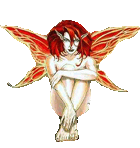 |
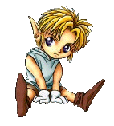 |
 |
 |
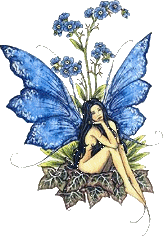 |
 |
| Artwork by Josephine Wall |
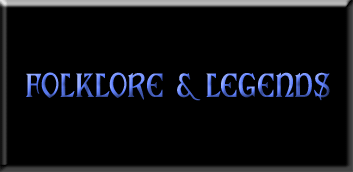 |


